If you’re struggling to figure out how to use your portable dishwasher, you’re not alone. In this guide, we’ll walk you through the steps to properly use your machine and get your dishes sparkling clean.
Running a portable dishwasher is simple once you have installed it by consulting the user manual – just connect the hoses, load dishes, and detergent, and select a cycle.
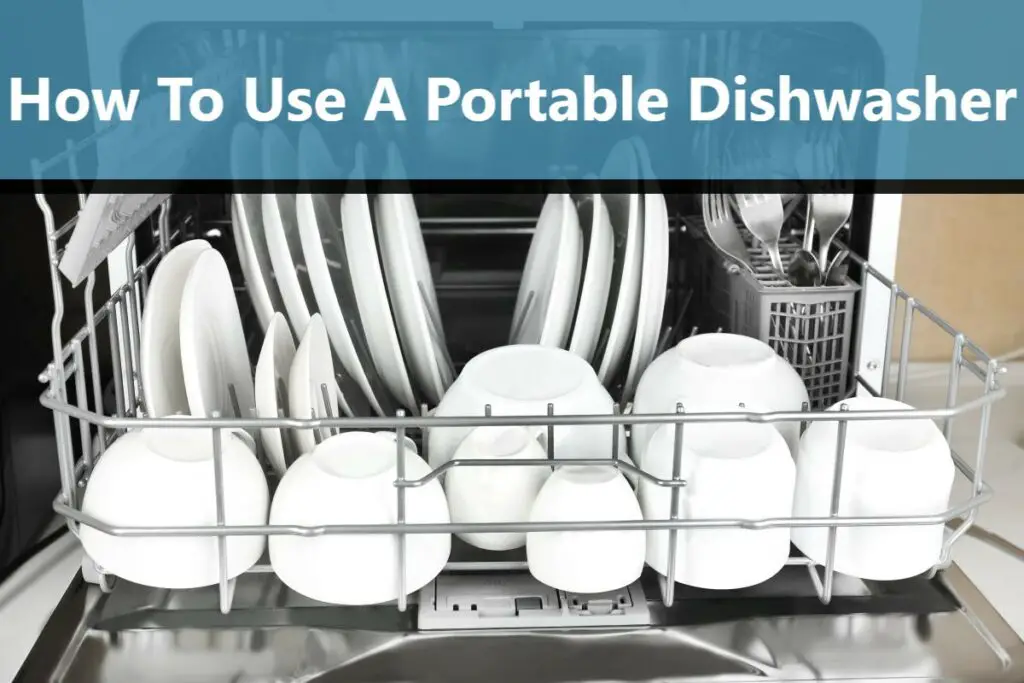
Let’s look into the detailed guide on how to use a portable dishwasher and read about the common problems when using one.
Table of Contents
Preparation
Before you run a wash cycle on your portable dishwasher, there are a few things you must keep ready:
- A wrench or pliers (to loosen the faucet aerator)
- Dishwasher detergent
- Rinse aid
If you still struggle to install the portable dishwasher you should read How To Hook Up A Portable Dishwasher, Portable Dishwasher Water Pressure Guide, How To Connect a Portable Dishwasher to a Pull-Out Faucet, and The Portable Dishwasher Temperature Guide.
9 Steps to Run a Portable Dishwasher
Running your portable dishwasher involves a few simple steps that you can follow to ensure the proper setup for effective operation.
1. Roll the Dishwasher Near the Sink
First, move your dishwasher near the kitchen sink. This should be easy since portable dishwashers are on wheels to facilitate movement.
Ensure the appliance is close enough to the sink to set up the hoses without any bends or loops.
2. Prepare the Dishes
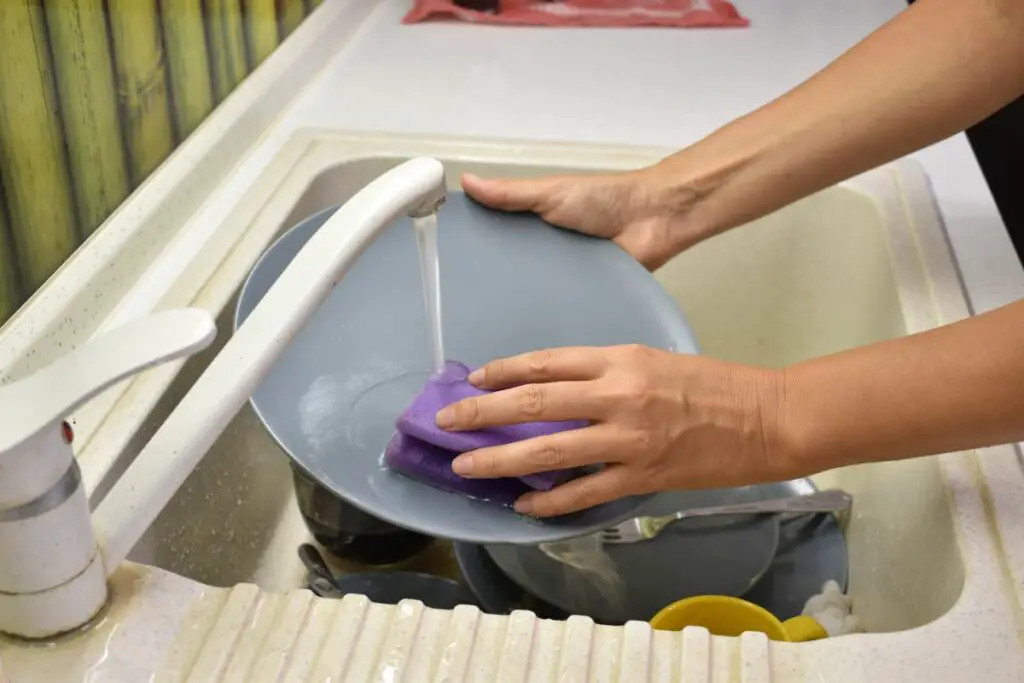
Scrape off excess food from your dishes before loading them into the dishwasher. This is essential to avoid residual food clogging the dishwasher filter or drain hose.
Generally, pre-rinsing isn’t necessary since this defeats the purpose of reducing water usage with a dishwasher.
However, if you have any pots or pans with burnt residue at the bottom, it would be best to soak them in soapy water before loading them into the dishwasher.
3. Load the Dishwasher
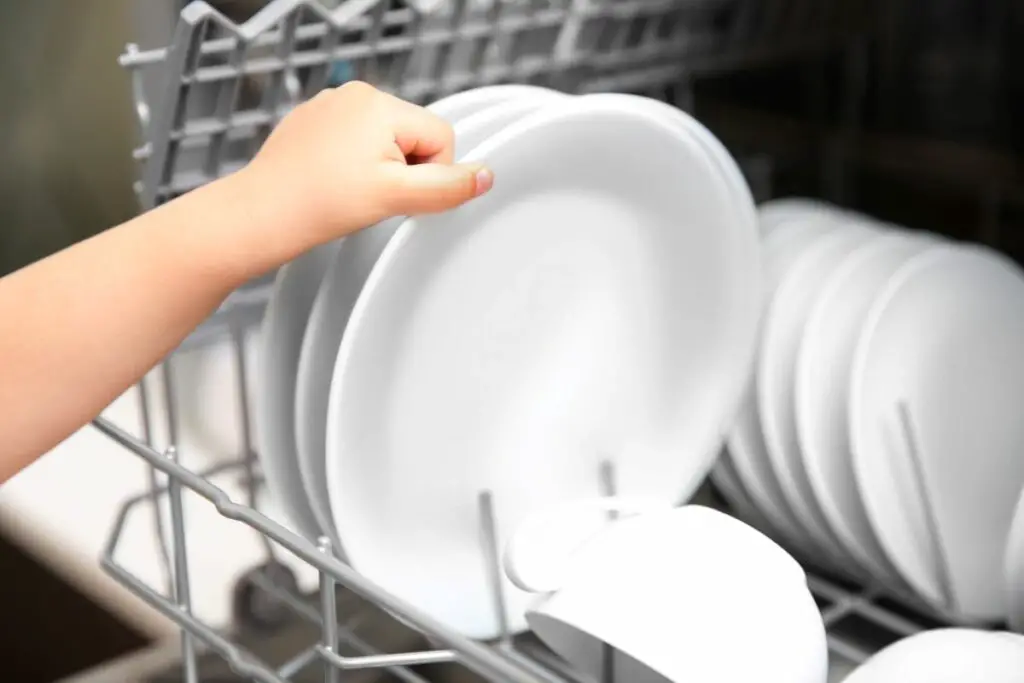
Next, arrange the dishes in the dishwasher with vertical items like plates, lids, and trays on the bottom rack, along with the silverware. Place bowls, cups, and other containers in the top rack.
Ensure the dishes are spaced apart and facing inward for efficient cleaning.
Avoid overloading the appliance; consult the manufacturer’s guide to check how to load your dishwasher.
4. Add Detergent and Rinse Aid
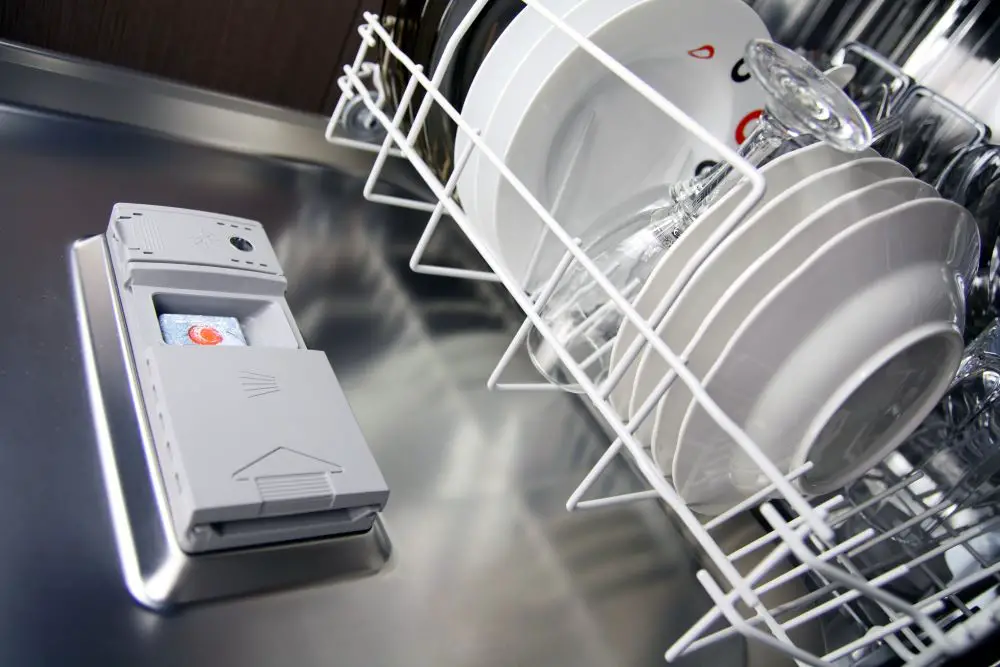
Once you’re done loading the dishwasher, add the appropriate amount of detergent to the detergent dispenser on the dishwasher door.
Always use the detergent type and quantity as recommended by the manufacturer.
Consider using a rinse aid to prevent water spots on your dishes and enhance drying performance.
Fill the rinse aid dispenser (inside the dishwasher door next to the detergent dispenser) to the maximum fill level.
5. Power On and Select the Suitable Cycle
Pull the power cord from the back of the machine and plug it into a 120 V power supply.
Then, select the appropriate wash cycle option.
The common options are Normal, Quick Wash, Heavy, or Eco mode. It is essential to choose the wash cycle option to suit your load type for effective cleaning.
6. Connect to a Water Supply
The next step is to connect the inlet hose of the dishwasher to a water supply (the kitchen sink faucet). Pull the set of double hoses (the inlet and drain hoses) from the back of the machine and ensure the hoses are not twisted or kinked.
Remove the faucet’s aerator; use a wrench or pliers to loosen and twist it off.
Pull down on the collar of the connector while lifting it to fit onto the faucet adapter. Once the connector locks in place, release the locking collar. Then, turn on the hot water slowly all the way.
Alternatively, you can run the hot water till it’s hot enough, then turn it off and connect the inlet hose before turning it on again.
Ensure the inlet hose is securely connected to the faucet without any leaks.
7. Run the Dishwasher
Close the dishwasher door, press the start button, or select the Start option on the control panel. The dishwasher will start the wash cycle, which includes the prewash, main wash, rinse, and drying phases.
If you notice any leaks, unusual noises, or error messages, pause the wash cycle and try to locate the cause of the problem.
8. Disconnect Power and Water Supply
Once the dishwasher cycle is complete, unplug the machine from the power supply.
Also, disconnect the water supply hose by turning off the hot water first and pressing the button on the side of the hose assembly to release water pressure. Then, pull down the collar to remove the hose from the adapter.
Shake out any excess water from the hoses and place them back at the back of the dishwasher.
9. Unload the Dishes
Carefully open the dishwasher door since it may be hot soon after the cycle.
Unload the dishes from the bottom rack first, then the upper rack.
Wipe the dishwasher’s interior with a dry cloth and keep the dishwasher door open to air it out for some time. Then, roll it back into its storage space.
Problems When Using a Portable Dishwasher
Dishwashers, whether built-in or portable, require regular maintenance, or you may encounter some common problems as follows.
- Noisy operation
While portable dishwashers may generate some noise during regular operation, too much noise could indicate an issue. Common causes include improper leveling of the dishwasher, a faulty pump or motor, a bent wash arm, or worn-out seals and bearing rings.
- Inadequate drying
At times, your dishes may come out of the dishwasher still wet. This can be due to insufficient rinse aid, improper loading, or a malfunctioning heating element or thermostat.
- Unpleasant odors
When food debris is trapped in the dishwasher’s filter, it can cause your appliance to smell bad. Persistent odors could also be because of residue buildup or improper maintenance.
Check the 9 Reasons Your Portable Dishwasher Smells and fix it as described.
- Drainage problems
If standing water is at the bottom of the unit, your dishwasher isn’t draining properly. Some of the reasons causing this include a clogged filter, a clogged drain hose, or a malfunctioning pump.
Understand how they drain and clean the drain hose thoroughly.
- Electrical problems
If your dishwasher doesn’t start or experiences intermittent power loss, it’s likely because of an electrical problem. This could be due to a tripped circuit breaker, faulty power cord or control panel, or an improperly latched dishwasher door.
- Leaks
Your dishwasher may leak onto the floor if its door gasket is damaged (cracked) or worn out. It could also be because of a faulty float switch causing the appliance to overfill and leak.
Check this article: 19 Reasons Your Portable Dishwasher Is Leaking (How To Fix It)
- Poor cleaning
A common problem when using a dishwasher is when it fails to clean dishes thoroughly. Reasons for this include improper loading, clogged spray arms, insufficient water circulation, or a clogged filter.
- White film on glasses
Hard water can cause an annoying film to remain on glasses. To fix this, you can use a water softener or a detergent designed to be used with hard water.
Conclusion
The nine easy steps for how to use a portable dishwasher are definitely more convenient than hand washing a load of dirty dishes.
All you have to do is roll the dishwasher near the sink, prepare and load the dishes, add the detergent and rinse aid, set up the hose and power connections, select the suitable cycle, and run the machine.
Once the cycle is complete, you can unload the dishwasher, disconnect the connections, and roll it back to its storage space.
Keep in mind that regular maintenance is essential for the proper functioning of the dishwasher. Without it, some common problems may arise and require fixing.
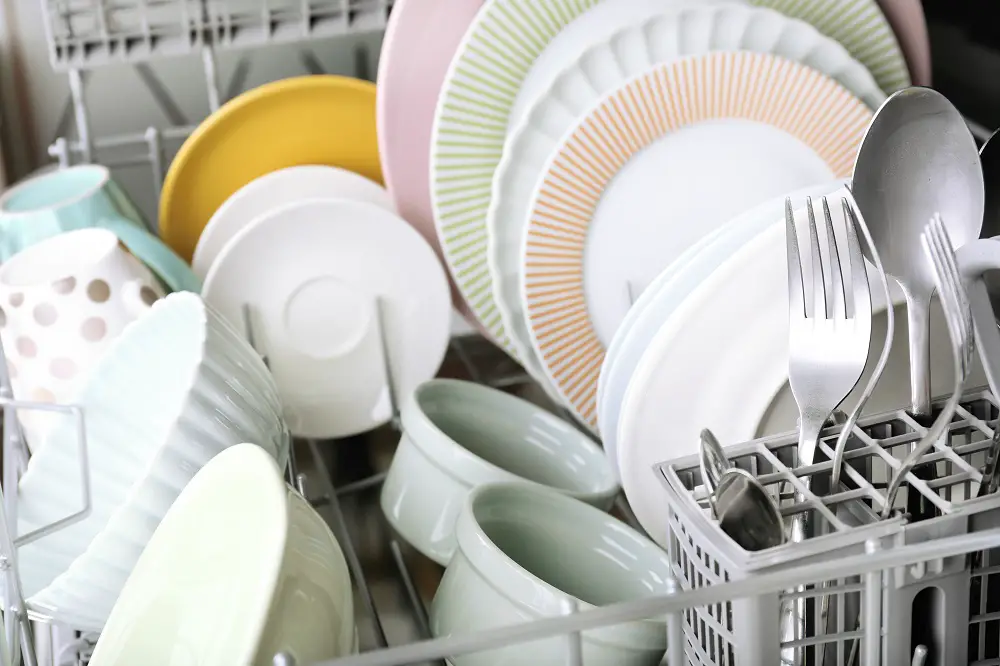
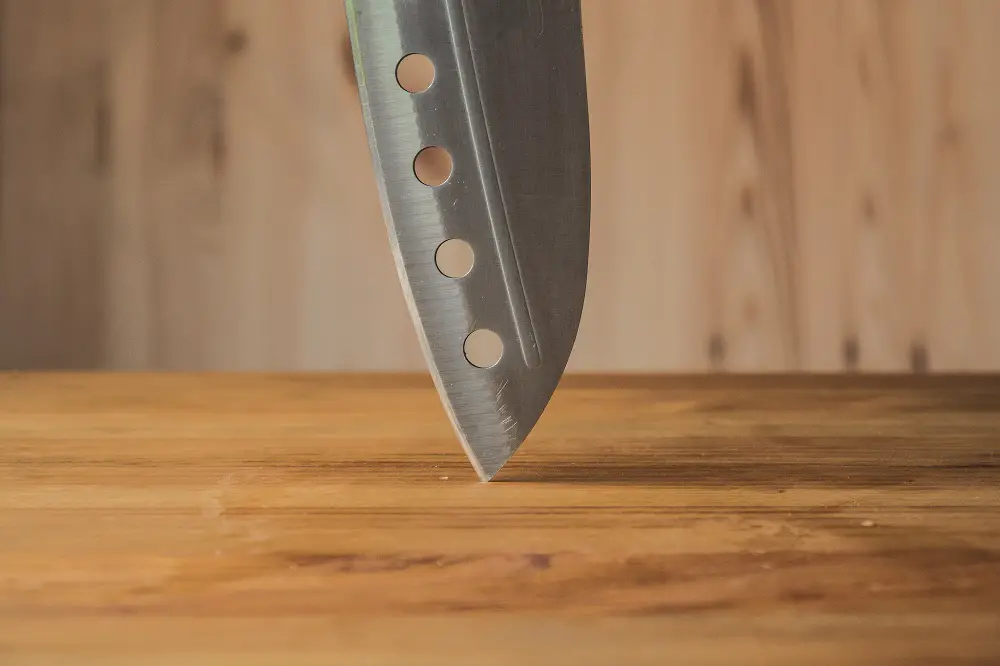
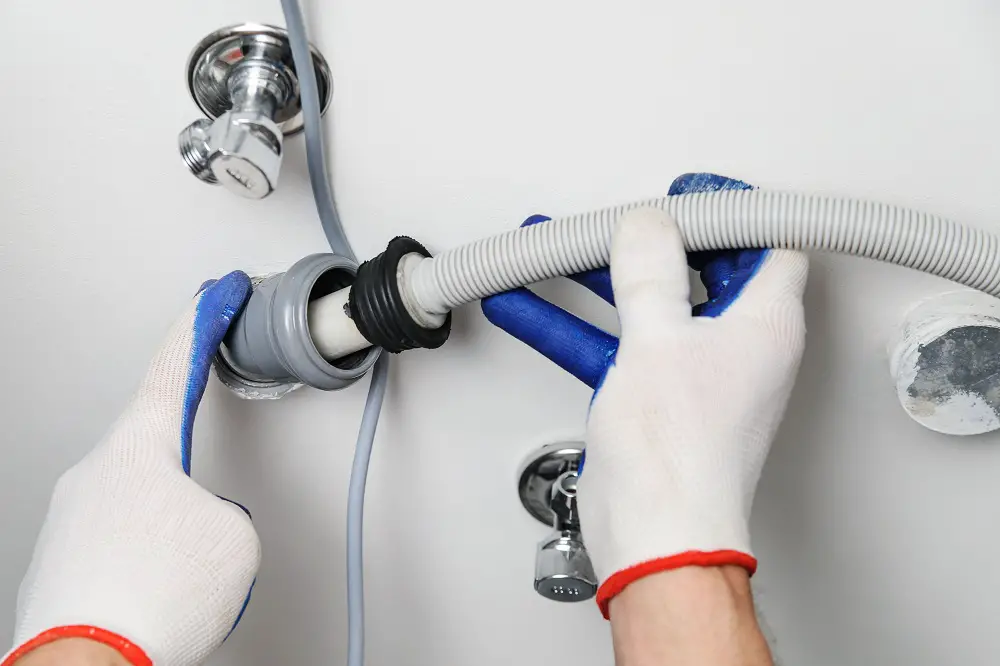
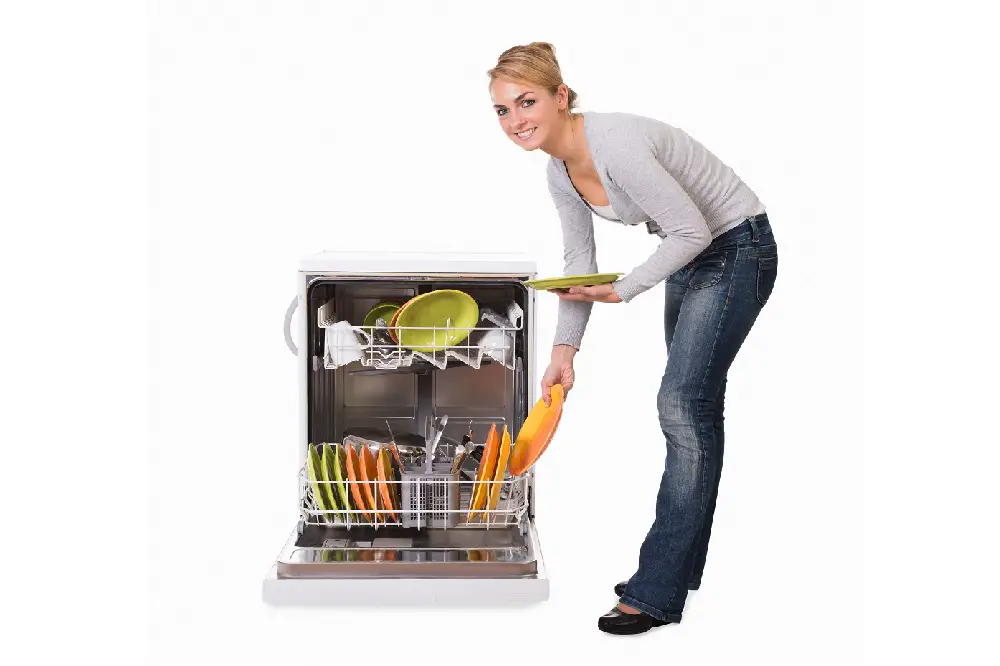
Just moved into a small apartment and this article on portable dishwashers is a life-saver. Martin, your step-by-step guide is super clear and helpful!
Love the guide! But I’m ‘kneading’ to know, does it handle the disaster after a baking marathon well?
Oh, absolutely! It’s been a ‘piece of cake’ handling all my baking aftermath!
Solid article, Martin. Quick q: how’s the energy consumption? Looking to save on bills but still avoid dish duty.
I appreciate the detailed steps for running a portable dishwasher. It’s essential for those of us who prize precision in every process.
Thanks for the insights, Martin. Does the article cover how eco-friendly these models are? Trying to reduce my carbon footprint here.
Great rundown of the portable dishwasher steps. Though, I was expecting a bit more depth on the technological aspects, like water usage efficiency or innovative features in the latest models.
Thanks fo the guide! Really helps make the kitchen chores seem less daunting. Cheers, Martin!
Living in a van, space is at a premium. This portable dishwasher guide is gold for those of us looking to maximize every inch. Had to juggle a bit with the water supply, but once you get the hang of it, it’s smooth sailing.
Solid advice. Always make sure to double-check connections to avoid leaks or water damage. A little precaution goes a long way in ensuring your portable dishwasher serves you well without hassles.
Was looking for something like this! After a big cook-off, the last thing I wanna do is dishes. Curious if it’s gentle enough for my delicate serving ware though!
It’s been great for my fragile items! Just use a gentle cycle and you’re good to go.